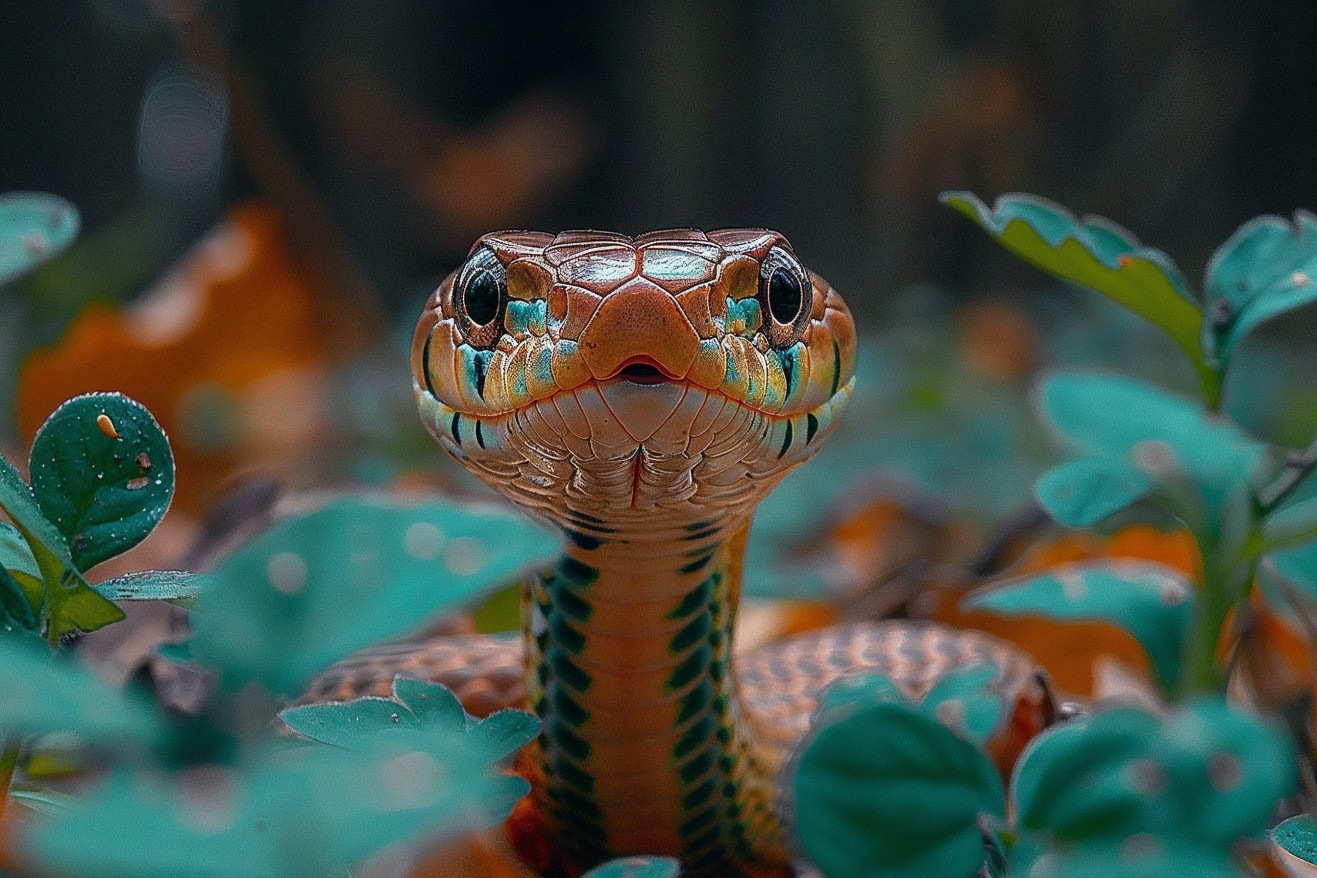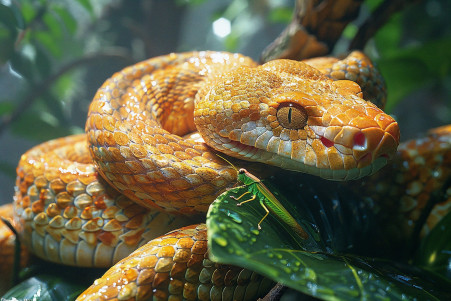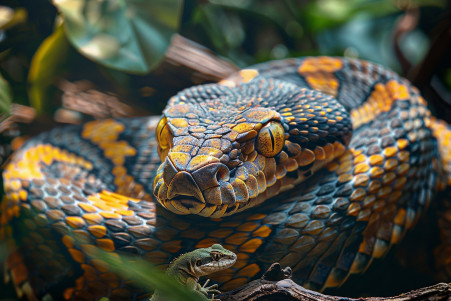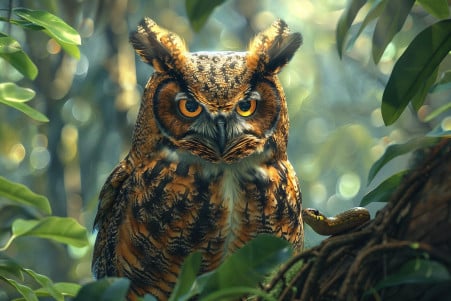What Do Garter Snakes Eat? A Look at Their Predation Habits
17 May 2024 • Updated 16 May 2024

Garter snakes are small, but do they have what it takes to eat mice? They do. In fact, garter snakes are one of the few snake species that have been observed eating mice and other small rodents. Although they primarily eat smaller prey like worms, slugs, and frogs, garter snakes will hunt and eat young mice or mouse pups when they can catch them.
This article will cover research by herpetologists and wildlife biologists that examines the predation habits and dietary specializations of garter snakes in various habitats. This survey includes everything from field studies to stomach content analyses to feeding trials in order to determine how well these snakes can catch and eat mice and other rodents. By learning about their hunting styles and food choices, we can learn more about the ecological niche of garter snakes as both prey and predator.
Do Garter Snakes Eat Mice?
Dietary Requirements and Eating Habits of Baby and Adult Garter Snakes
Baby garter snakes can be especially difficult to feed because they may not initially recognize live prey like fish or worms as food, according to The Seven Rules of Raising Baby Garter Snakes. Because of this, it's often best to avoid this problem altogether by feeding baby garters pinkies (newborn mice) from the start.
For garter snakes in captivity, the Garter Snake Forum caresheet recommends a diet that includes frozen/thawed fish, canned fish or cat food, worms, and appropriately sized frozen/thawed mice. However, some fish, like mackerel and goldfish, contain an enzyme that destroys vitamin B1 and should be avoided.
Baby garters that are 15-18 cm in length can be kept in small groups and fed every 2 days, while adults can be fed less frequently. The Garter Snake Forum also notes that garter snakes are not insectivores and should not be fed insects like crickets, as is sometimes mistakenly believed, because they can't digest them. It's important to make sure that garter snakes are fed the right diet from the time they are babies to ensure they grow up healthy.
How Do Garter Snakes Hunt?
Garter snakes are constrictors, so they don't use venom to kill their prey. They will only eat animals that are no wider than their bodies, according to About Garter Snakes. Garter snakes usually swallow their prey head-first, and their jaws can dislocate to accommodate larger prey. Their fangs point backward to help them swallow their prey.
Garter snakes are good swimmers and can even hunt underwater. They use debris, such as logs and rocks, to bask and hide, according to WebMD. They primarily hunt using their sense of smell, and their forked tongues help them pick up chemical signals from their prey. They also rely on their vision.
Some garter snakes, like the Northwestern garter snake, are "slug specialists" that mainly eat banana slugs and earthworms, according to the Animal Diversity Web. These snakes have evolved to make the most of the large populations of slugs and worms in their area.
Defense Mechanisms: Predators and Defensive Behaviors of Garter Snakes
Garter snakes are preyed upon by a number of animals, including large fish, bullfrogs, snapping turtles, large birds such as hawks and crows, and other snakes. The garter snake's striped pattern helps with hiding, and some species have evolved to make sudden turns to confuse predators with optical illusions, according to the BioKIDS resource.
Garter snakes have a number of predators and have evolved a number of defense mechanisms to protect themselves. One of the most common is the production of a musk that smells terrible, which garter snakes use to defend themselves against predators such as bears, frogs, turtles, and mammals, according to Environmental Pest Management. Garter snakes are also mildly venomous, but their venom is not very toxic to humans, according to Cambridge Day.
Garter snakes are also threatened by habitat loss and over-collection for the pet trade, although the Washington Department of Fish & Wildlife says the common gartersnake population in Washington is not in danger. Knowing about their defensive mechanisms helps scientists understand how these snakes live in their environment and interact with other animals.
The Social Lives of Garter Snakes: Communication and Senses
Garter snakes rely on touch, smell, and the use of their forked tongues to communicate. According to Garter Snakes, males use pheromones to find and track females during the breeding season, forming mating balls around them. Meanwhile, newborn snakes use pheromones to follow scent trails to food and other snakes, and adults also rely on pheromones as well as vibrations and relatively good eyesight, according to BioKIDS.
More recently, studies have shown that garter snakes have social preferences, including the tendency to form "friendships" and associate with familiar individuals, according to Science. However, when in groups, snakes are more likely to follow the group's collective behavior than their own individual personality traits. These studies offer valuable information about the rich social lives and communication strategies of these small but fascinating reptiles.
Tips for Garter Snake Lovers and Pet Owners
For people who are interested in keeping garter snakes as pets, it's important to make sure that their habitats are set up correctly and that they have access to the right food. The Garter Snake Forum caresheet warns against using live feeder insects because garter snakes can't digest them. Instead, they recommend feeding them a mix of worms, fish, and rodents that are appropriately sized.
If you're going to handle garter snakes, make sure to do so gently and without sudden movements to avoid getting bitten or sprayed with musk, according to the U.S. National Park Service. In the wild, it's best to let garter snakes go about their business and not try to catch or move them unless it's absolutely necessary. This will allow you to watch them from a distance and learn more about their behaviors and the important role that they play in their environment.
By learning about the best ways to care for and feed garter snakes and by letting them live in peace in the wild, people can come to a greater understanding of and respect for these interesting reptiles. Their social lives, hunting techniques, and ways of defending themselves are all interesting and can help people learn more about these small but mighty snakes.
Conclusion: The Fascinating World of Garter Snakes
Garter snakes are carnivores that will eat a wide variety of prey, including small rodents like mice. According to the U.S. National Park Service, these small snakes will swallow their prey whole and can overpower a range of animals like snails, earthworms, leeches, small fish, grasshoppers, and even small birds and rodents.
The What Do Garden Snakes Eat? article further explains that garter snakes are active hunters, consuming rodents in dry areas and shifting to more aquatic prey like fish, leeches, and amphibians near water sources. They will swallow their prey head-first to allow the limbs and other appendages to fold flat during consumption.
As described by About Garter Snakes, garter snakes use suffocation rather than venom to kill their prey, and have specialized jaws that can dislocate and split to accommodate larger meals. Their rear-pointing fangs also help keep the prey moving in the right direction during swallowing.
Conclusion: The Fascinating World of Garter Snakes
Garter snakes are opportunistic hunters that can and do prey on mice and other small rodents when the opportunity arises. Their diverse diets, hunting tactics, defensive behaviors, and social dynamics reveal a complexity often overlooked in these small snakes. Understanding their role as both predators and prey provides insights into the delicate balance of ecosystems they inhabit. Whether kept as pets or observed in the wild, garter snakes offer a captivating window into the remarkable adaptations of these reptiles. Continued research efforts will further unravel the mysteries surrounding the lives of these deceptively simple serpents.


